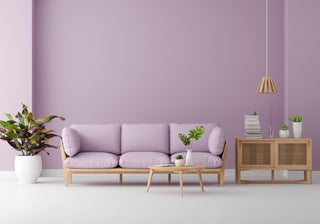In today's world of fast furniture and disposable decor, building an eco-friendly home has become essential. Sustainable furniture offers a responsible alternative that reduces environmental harm while creating beautiful, long-lasting spaces. This guide explores practical ways to furnish your home with pieces that benefit both your living environment and the planet.
Why Sustainable Furniture Matters
The environmental impact of furniture production is significant, from deforestation to chemical pollution. Choosing sustainable options helps preserve forests, reduces waste in landfills, and minimizes carbon emissions from transportation. Beyond ecological benefits, sustainable furniture often features superior craftsmanship, resulting in pieces that last for generations rather than years.
Identifying Sustainable Materials
True sustainability begins with material selection. Solid wood from responsibly managed forests certified by the Forest Stewardship Council (FSC) provides durability without contributing to deforestation. Bamboo offers a rapid-growth alternative for items like flooring and furniture frames. Reclaimed wood gives new life to old materials while adding unique character. For upholstery, organic cotton, linen, and hemp provide natural, biodegradable options that avoid the pesticides used in conventional fabric production.
Responsible Manufacturing Processes
How furniture gets made matters as much as what it's made from. Look for manufacturers using water-based adhesives and low-VOC finishes that won't release harmful chemicals into your home. Energy-efficient production methods, such as solar-powered workshops, further reduce environmental impact. Local craftsmanship often means lower transportation emissions while supporting skilled artisans in your community.
Designing for Longevity
Sustainable furniture should stand the test of time both physically and stylistically. Timeless designs with clean lines and neutral palettes remain relevant through changing trends. Modular pieces that can adapt to different spaces or needs prevent premature replacement. Well-constructed furniture with solid joinery techniques like dovetail or mortise-and-tenon joints can often be repaired rather than discarded when wear occurs.
Making Sustainable Choices Room by Room
In the living room, prioritize sofas with natural latex cushions and frames made from sustainable hardwoods. For bedrooms, mattresses with organic wool or natural latex provide healthy sleep surfaces without synthetic materials. Dining rooms benefit from tables crafted from reclaimed wood or certified sustainable sources. Home offices can incorporate desks with modular designs that adapt to changing needs over time.
The Value of Secondhand and Upcycled Pieces
Pre-owned furniture represents one of the most sustainable options available. Vintage shops and estate sales offer quality pieces with history and character. Upcycling transforms existing furniture through creative refinishing or repurposing, giving old items new functionality. For temporary needs, furniture rental services provide access to quality pieces without long-term commitment.
Caring for Sustainable Furniture
Proper maintenance extends the life of any furniture. Regular cleaning with natural products like beeswax polish preserves wood surfaces without harsh chemicals. Immediate attention to spills prevents stains on upholstered pieces. Periodic tightening of joints and hardware keeps furniture structurally sound. When updates are needed, consider reupholstering or refinishing rather than replacement.


